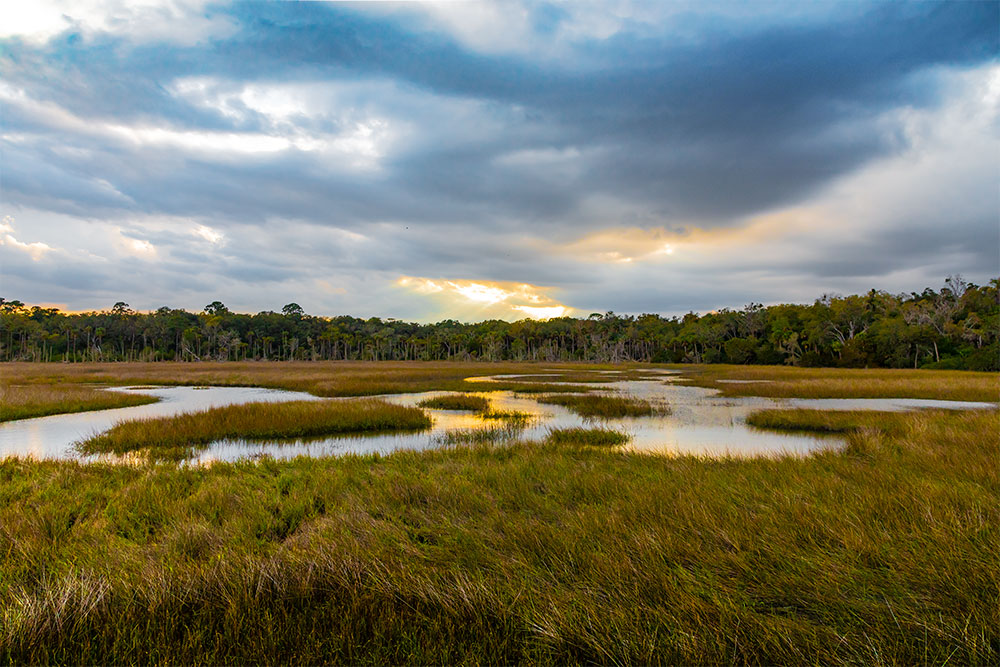The Timucuan Ecological and Historic Preserve comprises 46,000 acres of wetlands, waterways, and other habitats in northeastern Duval County. It is named for the Timucua Indians who had 35 chiefdoms throughout northern Florida and south Georgia at the time of Spanish colonization.

Established February 16, 1988 - a patchwork of public land on both sides of the St. Johns River - Timucuan encompasses sites of historic, cultural, and ecological interest scattered between Amelia Island and Mayport. Most of these sites are directly tied to the indigenous people of this region, the Timucua, and their interactions with the Europeans who attempted to settle here.

The history and culture of the Preserve stretches over 6,000 years. Here, you can listen to the life stories of the native people who survived in Florida's environment prior to European contact. You can learn of the clash of cultures that occurred as nations converged in the New World, from European attempts at colonization to the struggles of enslaved African peoples.
Archeological excavation by a University of North Florida team has revealed more information about indigenous peoples in the area. On Black Hammock Island, they have discovered remnants of the second-oldest pottery in the United States, dating to 2500 BCE. (There have been slightly older finds in the Savannah River area.)
They also have excavated more recent artifacts contemporary with the Mocama chiefdom. In the last 25 years, these Native American people have been recognized as distinct from the Timucua, although they spoke a Timucuan dialect. Their chiefdom extended from the St. Johns River to St. Simons Island, Georgia.
Archeologists believe they have found evidence of a Spanish mission on the island as well. San Juan del Puerto, one of the oldest Spanish missions in Florida, was established here during the 16th century. Franciscan brothers were missionaries to the Timucua and Guale Indians along the coast, whose territory included the Sea Islands in Georgia and up to the Savannah River.
The Fort Caroline National Memorial is located in the Timucuan Preserve. Fort Caroline memorializes the short-lived French presence in sixteenth century Florida. Here you will find stories of exploration, survival, religious disputes, territorial battles, and first contact between American Indians and Europeans.

Fort Caroline National Memorial also hosts the Timucuan Preserve Visitor Center. When visiting the park you can discover history, hike on nature trails, watch for dolphins in the St. Johns River, become a Junior Ranger and more.

The Kingsley Plantation, the oldest standing plantation in the state. During the eighteenth and nineteenth centuries, many people came to Florida. Some, like Zephaniah Kingsley, sought to make their fortunes by obtaining land and establishing plantations. Others were forced to come to Florida to work on those plantations, their labor providing wealth to the people who owned them. Some of the enslaved would later become free landowners, struggling to keep their footing in a dangerous time of shifting alliances and politics. All of these people played a part in the history of Kingsley Plantation.
Source: https://national-park-posters.com/blogs/national-park-posters/timucuan-ecological-and-historic-preserve
